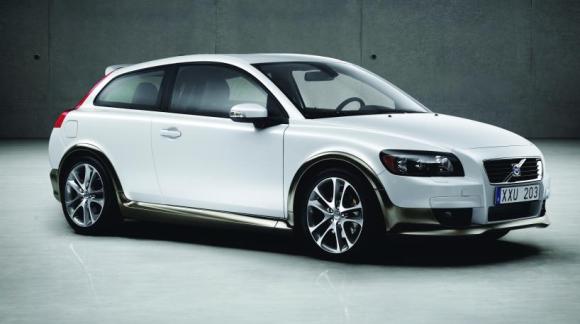The V8 Continental now gets a really satisfying voice throughout the rev range. From the two twin exhausts with a design that looks like two reposing 8s, the thunder and thrum is nearly constant, what with torque staying at the maximum 487 lb-ft from 1,700 to 5,000 rpm. Even prior to 1,700 revs, though, just pressing the throttle pedal starts the rumbling from beneath the chassis. The bi-turbo W12, due to its way of doing things technologically, just doesn’t provide this fantastic orchestra. The Continental is now appropriately more like a grownup Aston Martin V8 Vantage and remains much more capable than that Aston.
Interestingly, the new engine is directly responsible for just 16 percent of this added efficiency with its fewer cylinders and consequently less weight. Then there’s direct injection, smaller higher-pressure turbochargers, and Cylinder on Demand – technologies that will finally be incorporated into the W12 only in 2014. The Continental GT V8 now uses an average of 18 mpg, while the GTC version reads 17 miles per delicious gallon of premium fuel. The CO2 emissions are down pretty convincingly on both cars as well.
Out on the demanding 2.5-mile track of Navarra, however, the gearbox was giving me a few temper tantrums, to be honest. It had the uncanny ability of sucking most of the good fun out of each lap by upshifting automatically once the tachometer needle reached a few rpm short of the indicated 6,250 red zone. With full power arriving at 6,000 rpm, there was almost no time at all to enjoy it before the transmission decided it was time for the next gear up. Frankly, this is pretty shameful. In fact, at the Q&A we all had with Bentley bosses after the drive, even the Bentley Boys agreed with me and said that solutions are in place for a future Super Sports trim package that holds gears, or perhaps even a different gearbox in the future.
The cylinder deactivation technology that adds an additional 5 percent of the fuel efficiency for this 4.0-liter V8 is called Cylinder on Demand, just as on the Audi S cars in which it was launched at the end of 2011. During the many no-throttle moments of any drive while in the normal “D” setting for the transmission, cylinders 2-3-5-8 cease their valve-lift and combustion phases whenever the “no throttle load” time exceeds five seconds. Once there’s any downward throttle pedal angle change for acceleration, the special cam lobes shift back to engaging these four cylinders. I felt nothing at all and there is no special readout anywhere on the dashboard that lets me know how I’m doing in saving the planet. And this is perfect for such car buyers in my opinion, because research shows that they just want it to work and they don’t ever want to have to think about it. How owners will grow to notice it is in the fewer times they’ll need to go to the fuel station to fill the tank; the theoretical range for these V8 Continental is now 525 miles.
Dynamically, especially as shown on the demanding track, these Continentals are still heavy things. The 385 added pounds of the GTC V8 in particular were quite noticeable out on the Spanish country roads. I personally would not purchase the GTC over the hardtop GT simply because of the noticeable dynamic compromises. Either car is an improvement over their W12 originals this way, but more needs to be done somehow. Again, the Bentley Boys all nod in agreement to this point.
Nonetheless, the 55 lbs less weight at the nose of the car and freshened 40:60 torque split of the all-wheel drive are welcome touches that render the V8 Continentals more dynamically adept than the W12s. In fact, Bentley has decided to use the red Flying B logo for all of these V8 engine models, a sign that there are much better things to come that will make things less fat feeling. All together, I really enjoyed these twin-turbo V8 Bentleys and cannot wait for the next iteration of both. For now, acceleration to 60 mph for the GT V8 is 4.6 seconds, that for the GTC a respectable 4.7 seconds. Happily, top speed stays just over 185 mph for both, though the wind noise in the GTC should limit the soft-top car to 155 mph. But I am not the boss, of course.
Bentley seems to think that the Continental GT and GTC engine split will be 50/50 between W12 and V8 twin turbo purchases. I say that’s wrong and that the split will quickly be seen as around 25:75 in clear favor of the better V8 powertrain and packaging.
Bentley Continental GT + GTC V8
Price: $180,000; GTC – $200,000
Deliveries start: mid-April 2012 in U.S.
Motor: 4,000 cc, 4-valve
Power: 500 bhp @ 6,000 rpm
Torque: 487 lb-ft @ 1,700 – 5,000 rpm
Transmission: eight-speed ZF automatic w/shift levers on steering column
Fuel capacity: 23.8 gallons
MPG avg. city/hwy: 18 mpg; GTC – 17 mpg
Performance: 0-60 mph 4.6 seconds, v-max 188 mph; GTC – 4.7 sec., 187 mph
Length x width x height: 15’9” x 7’3” x 4’7”; GTC height – 1 mm less than GT
Wheelbase: 9’0”
Curb weight: 5,060 lbs; GTC – 5,445 lbs
Cargo space: 12.6 cu ft; GTC – 9.1 cu ft





